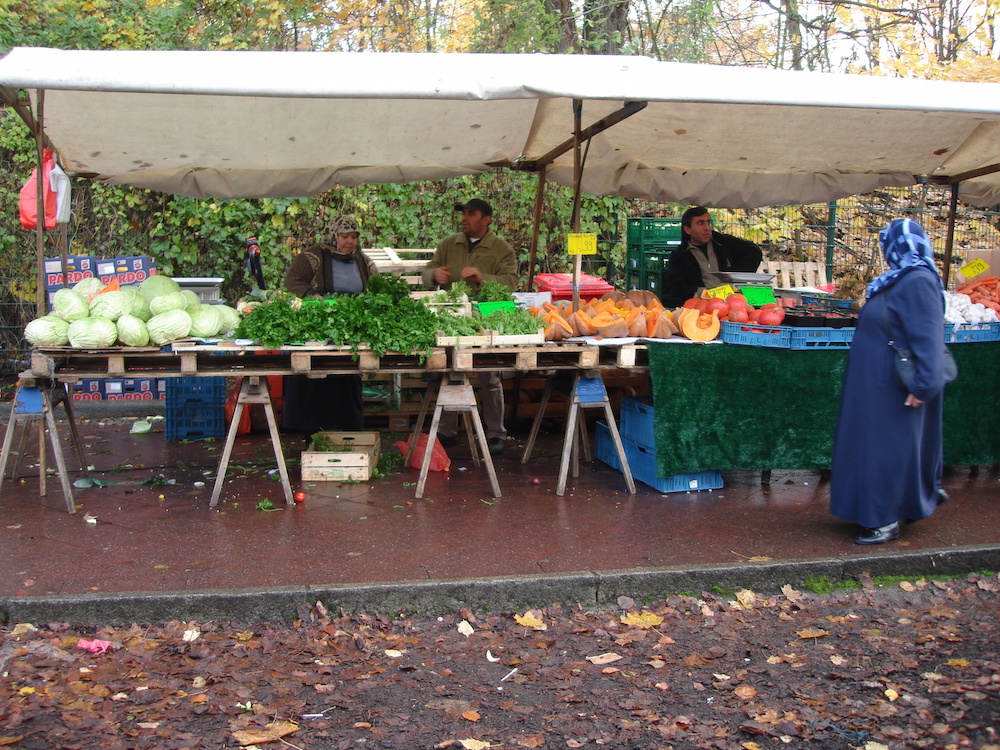Made in Berlin
Being a foreigner in Germany’s capital
Being a foreigner in Germany’s capital

It’s time, again, to reflect upon the past and future. While adopting the two-way gaze of Janus, I’d like to look beyond the economic crisis. Last year saw the 20th anniversary of the fall of the Berlin Wall; let’s assess how the city has been transformed into a global hub for contemporary artists.
One stinging assessment came from the German journal Lettre International, which had invited me to write about the anniversary. The issue promised essays by Boris Groys and Sylvère Lotringer along with works by John Baldessari and Mike Kelley. Instead of writing, I invited artists – mostly foreigners who, like me, make Berlin their home – to make a visual contribution. Imagine my dismay when Lettre International came out with an interview full of elitist–racist statements by Thilo Sarrazin, a former Berlin finance senator and a board member of the Bundesbank, Germany’s central bank.
The Bundesbank – and many others – denounced Sarrazin’s comments, which included: ‘the problem [is] that 40 percent of births take place in the underclass [of German Berliners]’; ‘a large number of Arabs and Turks in this city, whose numbers have grown thanks to the wrong policies, have no productive function except selling fruit and vegetables’; ‘[Vietnamese] parents can hardly speak German and sell cigarettes or have a kiosk.’ The only irony is Sarrazin’s ignorance of his own background: his name is a French variation on ‘Saracen’ (Arab Muslim).
These comments, however shocking, may seem irrelevant for the art world, since Sarrazin didn’t target Berlin artists, whatever their class or nationality. That may be because art is associated with upper-class culture and high-end internationalism. But I’m not going to put myself above his critique of the German ‘underclass’, let alone foreigners in the city. As a writer, I’m not so economically distant from ‘underclass’ wages. As a self-employed foreigner, I’m running a modest business, too. And, quite frankly, I don’t want to live in a city where I can’t buy fruit, vegetables and cigarettes.
Like many Berliners, I can’t afford to buy much art. Since Berlin lacks a thriving art market, many argue that the city, despite its international community, is not a ‘real’ art centre like London or New York. Yet that argument confounds old internationalism (with its stable bilateral exchanges) and today’s globalization (with its constant circulation between countries). Globalization divides production from consumption by moving both commodities and producers: from fruit and fruit-pickers to art works and artists.
Indeed, that familiar tag ‘lives in Berlin’ means ‘made in Berlin’ – and likely sold elsewhere. Since 1989, the city has become to the art world what China is to world manufacturing. If globalization empties factories (or turns them into galleries), why shouldn’t it be able to transform an entire city into a global artist ghetto, reminiscent of Montmartre in Paris in the 1900s or New York’s Lower East Side in the 1970s – cities that seemed to have priced themselves out of the affordability bracket for entry-level foreign artists.
Berlin’s more than 400 galleries – both German and foreign-owned – are a testament to the maelstrom speed of globalization. It seems cheaper not only to make art in Berlin but also to put art on sale there, since works can always be owned and exhibited in other cities. Fairs are not the sole points of exchange. Berlin’s Gallery Weekend – which brings private collectors to the city for a weekend shopping trip – puts art into a ‘fly ‘n’ buy’ programme.
While economics is not the only reason for Berlin’s rise over the last two decades, let’s stick with the Marxist approach. What kind of global workers are Berlin’s artists, critics and curators? German or foreign, we are closer to migrant workers than to Chinese factory hands, although we follow biennials, fairs and exhibitions instead of seasonal harvests. Yet, unlike migrant workers, we don’t send money home. Many (especially non-EU artists with restricted visas) earn money elsewhere, only to bring it back to Berlin to pay taxes. No wonder Sarrazin exempted foreign artists from his rant.
How long will such tolerance last? Let’s look back, and ahead: Turks were welcomed in the 1960s, as foreign artists are today, albeit as ‘guest workers’ for Germany’s ‘economic miracle’ – until the miracle was over. Fifty years from now, we may read about artist–pensioners straining social services. Like many Germans, including leftists, Sarrazin refers to ‘migrants’ who move on like guests instead of ‘immigrants’ who stay put. In fact, Germany has no ministry for immigration, but a national ‘representative’ for ‘migration, refugees and integration’.
Sarrazin – despite being preliminarily investigated by the public prosecutor for inciting hatred – was demoted rather than fired. It also seems that the Bundesbank president, Axel Weber, okayed the interview, despite publicly denouncing it. In light of these events, it’s high time for Berlin-based artists – from Germany and around the world – to unite. One advantage of living in the country – the artist health insurance Künstlersozialkasse, which is partly state-funded – came under heavy fire in the parliament last year and will again.
Unfortunately, most artists in Berlin – being foreigners – can’t vote. Judging from my annual income, I don’t think taxes will translate into political power for many working in the arts. But, whatever their nationality, when Berlin’s artists work outside the city, they augment its global reputation – and have raised its symbolic value as a cultural capital in the eyes of foreigners over the past 20 years – precisely by adding: ‘lives in Berlin’. Why not make that labour more tangible, useful, pertinent and political?
























